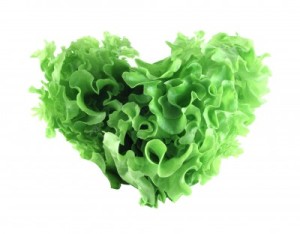 Over the years I’ve had hundreds of people come to me completely confused about what to eat. Should I go low fat or low carb? How many calories should I eat? Should I be vegan or paleo? Is butter good for you, or is margarine better? Does organic matter? What is GMO?
Over the years I’ve had hundreds of people come to me completely confused about what to eat. Should I go low fat or low carb? How many calories should I eat? Should I be vegan or paleo? Is butter good for you, or is margarine better? Does organic matter? What is GMO?
It’s a scary world out there with respect to what you eat, and each week there is another study on how we are getting fatter or sicker or both. The stakes seem to be getting higher for getting it wrong, yet it seems almost impossible to get it right.
Truly, it is hard to get it right–changing your eating habits is incredibly difficult. But part of the challenge is that we get too caught up in complexity. We obsess over details that don’t matter to the average person.
In the interest of simplicity, here are two simple guidelines that, if you can get them right 80-90% of the time, will change your life. These rules will do wonders for the average person–unless you’re extremely sick, or a high performance athlete, you should take them seriously.
Note: I’m stealing liberally from Michael Pollan’s In Defense of Food. His “Eat food. Not too much. Mostly plants.” mantra is about as simple and effective as you can get.
Rule #1: Eat REAL Food
Your diet needs to be composed of food that is…food. Things that nature makes. Not things that science makes. Here are a few tips
- Real food has few ingredients. The most real food has one ingredient. Like apples. Or cucumbers. If you can’t tell me what all the ingredients are without looking at the label, then you’ve moved further away from real.
- Real food is identifiable. It’s “close to source” – it looks like where it came from. A blueberry looks like a blueberry. A Pop Tart looks like a roofing tile.
- Real food tends to be stored in your fridge. Not your cupboard or freezer. That’s why you should shop more around the outside edges of the grocery store.
- Real food is grown with fewer chemicals. The chemicals they spray on your industrial food don’t always make it to the ingredients list. If you can find and afford organic, it’s worth it.
- Real food is difficult to find in restaurants. If you want real food, prepare it yourself at home. Learn to cook. It’s not hard. And no, the drive-thru is really not that much faster.
A tomato is more real than a steak. But a steak is more real than a loaf of Wonder bread. Try to focus your shopping and eating as high on the real scale as possible.
Rule #2: Focus More on Vegetables
Even when your food is “real”, you need to also make sure a good portion of it is also plants. I’m neither vegetarian nor vegan, but we eat a lot of meals that are. Almost every patient I have needs to eat more vegetables. They’re the “most real” food you can find.
“But I don’t like vegetables.”
Too bad. Grow up. You can eat crap or you can be healthy. Not both. There are thousands of ways to prepare vegetables, and you’ll like some of them.
In a nutshell, I’m basically suggesting you eat mostly produce, with some meat and dairy, nuts, and healthy oils. Very little bread, pasta, and crap in boxes and bags. That’s it. That’s all you have to remember.
The Benefits
The best part about these rules is that if follow them you don’t have to worry about all the other stuff. If you follow these rules you’ll:
- Consume fewer chemicals
- Eat fewer calories
- Get more nutrients
- Eat less gluten and processed wheat products
- Be more hydrated
- Improve a host of health markers
- Reduce reactions from food intolerances and allergies
- Improve your digestion
- Increase your energy
And plenty more, all of which will happen by default. You won’t need to count calories or wonder about paleo versus low carb versus low fat. You’ll just be healthier.